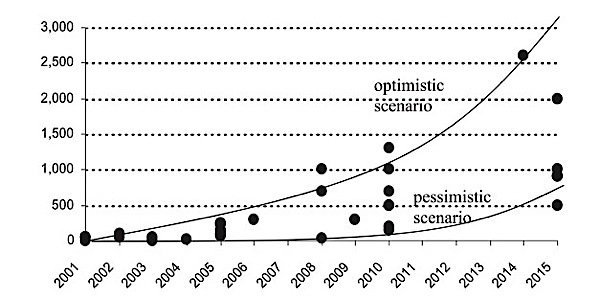The energy sector, including energy storage, solar power and hydrogen storage, will see great advances in the coming two decades, and nanotechnology will be a key driver of that progress. A new research report from the International Electrochemical Commission (IEC) and the Fraunhofer Institute for Systems and Innovation Research (ISI) in Germany concludes that while many aspects of solar energy and energy storage are already influenced by nano-materials, their importance will increase dramatically. Extended battery storage capacity, cheaper solar cells, and longer-lasting batteries for electric cars are just some of the benefits nanotechnology will make possible.

While there are nanotechnology products already in use, the area of nanotechnology is still largely theoretical, with most areas in the “basic research stage,” the IEC report finds. However, we can expect to see market-ready applications in a range of fields including optics, precision engineering, analytics, chemistry, automotive and mechanical engineering, materials management, medical engineering, pharmaceuticals and biology. The US and the EU together constitute the biggest market for nanotechnology, accounting for more than one-third (35 per cent) of the worldwide market by 2015.
The greatest potential for nanotechnology is in the areas of solar power generation and energy storage, according to Dr. Björn P. Moller, project leader of this study at Fraunhofer ISI. He estimates that the share of fossil fuels in global energy consumption will drop to 75 per cent by 2035, while the share of non-hydro renewable energy, including wind, solar and biomass, will increase from 3 per cent to 15 per cent in the same period.
As renewables become crucial for the energy mix of the future, the most important issue for their deployment will be cost; unless they can compete with other energy sources they will not be implemented.
Nanotechnologies that will be of particular importance, both in energy storage and photovoltaics, include nanoelectrodes, nanocarbon materials, nanocomposites, nanocoatings, nanoparticulate coatings, nanofluids, and nanocatalysts.
In the energy storage area, the IEC report sees a “profound change” in future demand for products in the mobile, stationary and consumer markets. The quest for high-power large-scale energy storage in vehicles, which now focuses on lithium-ion batteries and hydrogen-based fuel cells, will lead to the development of new applications, and nanotechnology will play a major role in that development.
Nanotechnology will also drive market penetration of new consumer products containing low-cost but highly efficient photovoltaics, the report says. Products which today exist only in niche markets will achieve greater market penetration by 2035. These consumer products will include wearable technology, photovoltaics incorporated in windows to form curtain walls on buildings, and greater use of solar cells in roofing materials. A complete list of products that are likely to see greater market penetration can be found here.

































